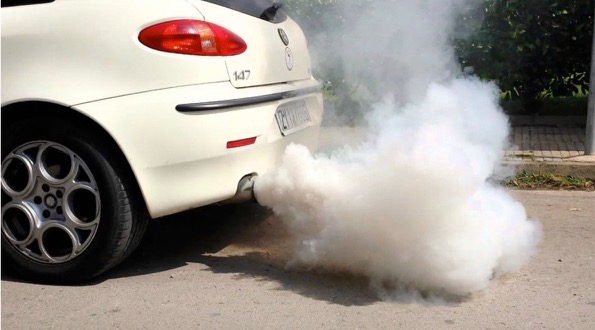Those attending the Harpenden Society's February meeting might well have described it as a ‘breath of fresh air'. It certainly created a temporary distraction from our pervasive pre-occupation with the St Albans District Local Plan and Harpenden's own Neighbourhood Plan.
More appositely, the presentation was all about the degree of freshness of the air we breathe. The guest speaker Professor Ranjeet Sokhi is director of the University of Hertfordshire's Centre for Atmospheric Research at Hatfield. The rhetorical title of his talk, ‘Air Pollution - How Fresh is our Fresh Air' served to highlight the growing concerns throughout the world, especially in urban areas, about poor air quality and its inevitably harmful effects, most obviously on human health.
He was keen to emphasise that contamination of the air in a particular location such as Harpenden High Street could not be blamed wholly on pollutants emitted from vehicle exhausts or smoking chimneys in the immediate area. Satellite observations had shown that concentrations of pollution could be moved vast distances across the globe, often affected by climate interactions.
Instrumentation, including for example the use of lasers, for measuring pollutants, especially the tiny particles capable of penetration deep into the lungs, was continuing to advance. It provided an ever greater understanding of cause and effect, when set against available health statistics.
A World Health Organisation report in 2014 concluded that ‘air pollution is the world's largest single environmental health risk' and it was estimated that seven million, or one in eight, premature deaths were attributable to air pollution. Meanwhile the numerous non-fatal effects included increased stroke, heart disease and respiratory disease problems. In the UK, according to the Department for Food, Environment and Rural Affairs (DEFRA), polluted air shortened average life expectancy by about six months, the associated financial costs of which were estimated at some £16 billion.
Particular mention was made by Ranjeet of the pollutants associated with diesel exhaust, namely nitrogen dioxide (NO2) and particulate matter (PM), though he acknowledged, during the meeting's subsequent Q&A session, that today's car and truck diesels, compliant with legislated ‘Euro 6' emission standards, were among the ‘cleanest' of road vehicle engines. He added however ‘that there is no threshold below which health effects do not occur'.
Agreed EU atmospheric quality standards were already in place in the UK, based on limits for PM, NO2 and Ozone (O3) per cubic metre of air, with a further limit for ultra-fine particles due for implementation in 2020. But, said Ranjeet, in reality they were targets rather than enforceable limits. The NO2 standard in particular was regularly exceeded in many places, especially in towns and cities, where it exacerbated breathing problems, most seriously for asthmatics.
On a relatively positive note for Harpenden residents, although there were no monitoring points in the town, measurements taken across the county, including St Albans, showed a typical ‘low' pollution level. On the day of the Harpenden Society meeting, a level 2 pollution - on a scale of 1 to 10 - was measured in towns within about a 10 mile radius.
In contrast, a maximum level 10 had been recorded in the traffic-choked streets of Camden, north London, on a day in February. It had been shown however that around two-thirds of London's airborne pollution originated elsewhere, and was then carried in by climatic activity, most obviously wind.
Monitoring of average air quality in the St Albans area over the past seven years had shown a downward trend in NO2 concentrations. Ranjeet pointed out however that it was greatly influenced by the weather. Rain cleaned the air, while cold dry conditions allowed pollutants to remain airborne.
Tests undertaken by the University of Hertfordshire team in the tunnel underneath the Galleria at Hatfield had shown that fewer airborne particles came from vehicle exhausts than was often supposed - only about a third. The remainder came from road surface and brake wear detritus and ‘resuspended' matter, thrown-up by vehicle movement turbulence.
One conclusion drawn from those results was that adoption of electric cars in place of diesel or petrol would not reduce real-life PM levels in the air very significantly. Another conclusion from the team's researches was that ultra-fine particle concentrations in the air were heavily affected by the distance of the site from a road travelled by motor vehicles and of course the density of traffic along that road.
Global warming, although a largely separate issue from air quality, was touched on in Ranjeet's presentation. He pointed out that carbon dioxide (CO2) was not the only potentially harmful emission. Others included most notably methane, widely generated by agriculture, albeit with a shorter-term effect than CO2. Black carbon, a key constituent of exhaust particulate matter, had also come to be recognised as a contributor to global warming and, as such, doubly undesirable, especially as, together with ozone, it can inhibit plant growth and therefore agricultural productivity.
What can be done, at a practical level, to cut air pollution and also combat climate change? Ranjeet put forward a number of measures, in approximate order of value: 1) Move from private car use to public transport (ie bus and train); 2) Promote healthier diets by moving away from meat towards more plant-based foods; 3) Reduce solid fuel (eg coal) burning; 4) Tighten vehicle emission and fuel efficiency standards.
Though it is no excuse for complacency, Ranjeet pointed out that while ultra-fine particle air pollution in London was much worse than in Harpenden, the concentration measured in Karachi, Pakistan, was more than six times greater than London’s!



